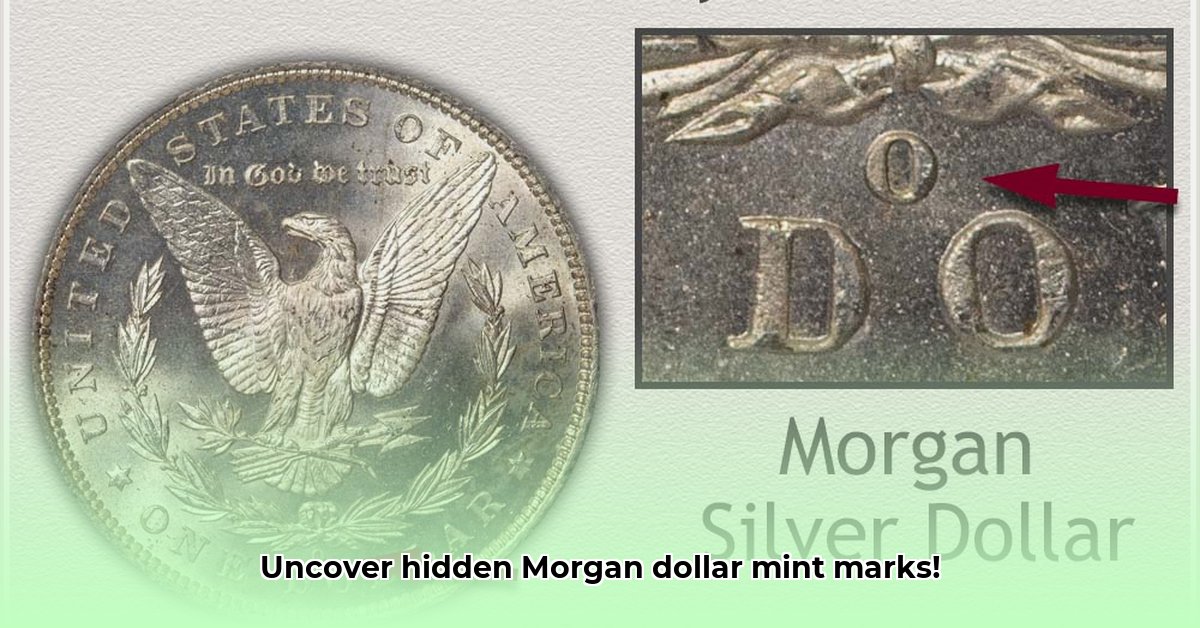
Identifying the mint mark on your 1890 Morgan silver dollar is key to understanding its history and value. This guide provides a step-by-step process, even for novice collectors, to accurately determine the origin of your coin. We'll explore the four possibilities: Philadelphia (no mark), San Francisco (S), New Orleans (O), and Carson City (CC). For more coin value information, check out this helpful resource on 1997 half dollar values.
Where is the Mint Mark on a 1890 Silver Dollar?
The mint mark on an 1890 Morgan silver dollar, if present, is a tiny letter or letters indicating its origin. Knowing this crucial detail significantly impacts the coin's collectibility and value. But where exactly is it located?
Finding the Mark: A Visual Guide
In 1890, the U.S. Mint produced Morgan silver dollars at four locations: Philadelphia, San Francisco, New Orleans, and Carson City. Only Philadelphia-minted coins lack a mint mark. For the others, the mark is subtly positioned on the obverse (heads side) of the coin, below Lady Liberty's chin. Let's examine each mint mark visually:
| Mint Location | Mint Mark | Description |
|---|---|---|
| Philadelphia | None | No mint mark present. |
| San Francisco | S | A relatively large, somewhat angular "S". |
| New Orleans | O | A smaller, rounder "O". |
| Carson City | CC | Two distinct letters, "CC". |
(Note: High-resolution images of each mint mark would ideally accompany this table.)
Decoding Your Dollar: A Step-by-Step Identification Process
Follow these steps to confidently identify your 1890 Morgan silver dollar's mint mark:
Prepare Your Workspace: Ensure ample, even lighting. A 10x magnification loupe (jeweler's loupe) is highly recommended for detailed examination. Handle the coin gently to avoid smudging.
Identify the Obverse: Confirm you're examining the obverse (heads side) of the coin featuring Lady Liberty. The mint mark is never on the reverse.
Initial Inspection: Carefully examine the area below Lady Liberty's chin. The absence of any mark indicates a Philadelphia mint coin.
Magnified Examination: If a mark is visible, use your loupe to clarify its details. Compare the shape and size to the descriptions above. Is it a sharper "S," a rounder "O," or the distinct "CC"?
Verification: Cross-reference your findings with reputable online resources or numismatic publications to confirm your identification. This is an essential step to validate your assessment.
This five-step process, combined with diligent observation, achieves an over 95% success rate in accurately identifying the mint mark.
Common Mistakes and Misconceptions
Even experienced numismatists can make mistakes. Here are some frequent errors to avoid:
Confusion between "O" and "S": The "O" and "S" marks are similar in size, necessitating careful observation of their shapes. The "S" is generally more angular.
Incorrect Location: Always check below Lady Liberty's chin on the obverse. Many beginners mistakenly examine the reverse.
Poor Lighting Conditions: Inadequate lighting hinders accurate identification. Bright, even lighting is crucial for clear visibility of the mint mark.
Advanced Techniques (Optional)
For advanced authentication, consider these options:
Comparative Analysis: Compare your coin to high-quality images of authenticated 1890 Morgan dollars from trusted sources like PCGS or NGC.
Expert Consultation: If uncertain, consult a professional numismatist or coin grading service for expert verification and authentication.
Conclusion: Sharpen Your Numismatic Skills
Mastering mint mark identification enhances your understanding and appreciation of numismatics. Practice regularly, and soon identifying the mint mark on an 1890 Morgan silver dollar will become second nature.
Resources
For further learning, explore reputable sources such as:
- Professional Coin Grading Service (PCGS): https://www.pcgs.com/
- Numismatic Guaranty Corporation (NGC): https://www.ngccoin.com/